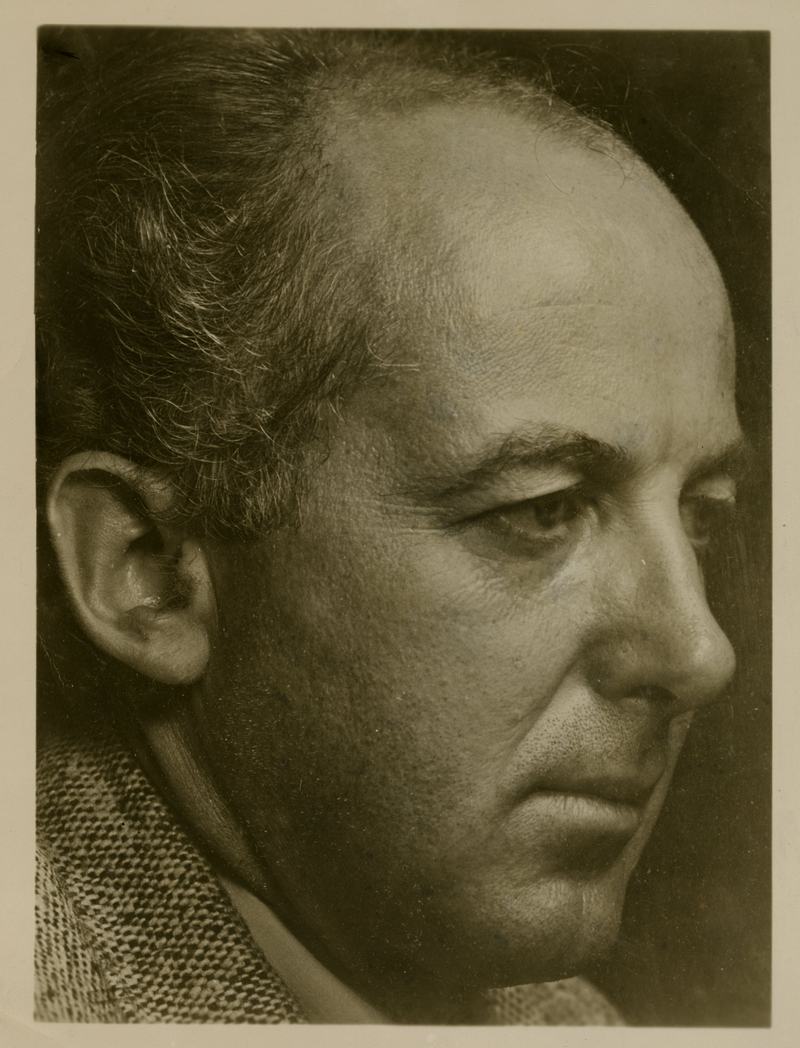 The NYPR Archive Collections
The NYPR Archive Collections
Henry Cowell for Masterwork Hour

Acclaimed composer Henry Cowell provides commentary to a musical program featuring outstanding American composers in advance of the 16th Annual WNYC American Music Festival. The works (and composers) discussed include "Sinfonietta" by Dane Rudyar, "Saxophone Concerto" by Henry Brant, "Three Gymnopedies" by Peggy Glanville-Hicks, and his own "Hymn and Fuguing Tunes #2 and #5, and Symphony #11.
Henry Cowell first introduces a pair of his own compositions - "Hymn and Fuguing Tunes #2 and #5" for string orchestra. He talks about a movement that developed in Boston in the late 1700s among writers of hymns who where cut off from European influences; these works fit in this tradition. They are of a modal style. He then differentiates between a "fugue" and "fuguing," the latter being freer in placement and less tied to a set melody. He argues that his pieces are not a direct application of the hymns and fuguing tunes of the past; rather his works are an attempt to see what would have developed in to modern times, rather than copying Haydn, Mozart, and others.
Cowell next introduces a tune by Dane Rudhyar, whom Cowell sponsored when Rudyar became a United States citizen, after emigrating from France, where he was a student of Debussy. Cowell tells us that Rudyar is deeply influenced by mysticism and oriental philosophy. It should all sound like "one great gong" - broad clanging dissonance. His piece, "Sinfonette," was in fact inspired by listening to and meditating on the overtones from a gong.
Cowell then introduces us to Henry Brant's piece "Saxophone Concerto." Cowell recounts meeting Brant when Brant was 11-years-old and already a promising young composer. Brant praises his "Puck-like" instrumentation and humor and his attention to tonal colors. Brant had done a number of Broadway shows, and the novelty and humor of his work is reflected in his more ambitious works. Charles Ives was an influence.
Cowell introduces Peggy Glanville-Hicks, who hailed from Australia, but studied in England, Vienna, and France, and eventually settled in America, the French influence being the stronge with a feminine charm and mastery. The work that is included in the program is "Three Gymnopedies."
The program concludes with Cowell's Symphony #7, which consisted of seven movements, each of which " belongs" to a use of music that is universal - music for children, a work song, a love song, a playful song, a "magic song," a war dance, and, finally a lament. This is not a conventional symphonic form, but there are allusions casting forward and backward throughout the piece tying the work together.
Audio courtesy of the NYC Municipal Archives WNYC Collection
WNYC archives id: 150168
Municipal archives id: LT6770